Women breasts are in innumerably varying shapes, sizes, symmetry and positioning, spacing, compactness and even the extent of sagging.
So much so that developing a standard bra measuring system proves elusive both locally and internationally.
As a result, several studies show that across the nations of the world, the proportion of women who have to contend with an incorrectly fitting bra is in the range of 80 to 85 percent.
In this post you will learn about how to figure out your bra size from the existing standard sizes.
Here is the Table of Contents
How to Determine Your Bra Size
The measurement challenge notwithstanding, measuring of bras has been around since the 1930s, when the S.H. Camp and Company introduced the alphabet letters A, B, C, and D to describe varying cup shapes.
Two measures are used to describe bra size; band length and cup size. The band length is the difference in length between the bustline and the under-bust, measured when a woman is standing upright. When it comes to the bra cup, it’s impossible to practically measure the cup volume and thus the cup size is assumed to be proportionate to the band length.
Bra fitting steps:
1. If you have to measure yourself, the first thing you should do is to take off your top and stand upright before a large mirror. You may decide to stay braless if your breasts are still standing steady naturally, most commonly small breasts. If your breasts are heavy and have started to sag, then it would be better to wear a lightly lined and unpadded bra that will allow proper bust measurement without affecting the size of your breasts.
You should also have a measuring tape with you.
2. To determine your band size, place and hold the tip of the measuring tape on your sternum just underneath the breasts, and wrap the tape around your upper torso at the position where a bra band should be. Turn around to look yourself in mirror and ensure that the tape is all right at your back.
Take the tape measurement at your sternum and round it to the nearest whole number inch. If the number is an even number such as 32, or 34, then this is your band size. If the number is an odd number, you may want to round it down to the nearest whole number inch if your band region is relatively thicker compared to the upper back, and round up if the band is leaner. Some bra makers may have different calculations of the band size though, so it’s important to check their website or confirm from your supplier before buying.
3. To measure your bust size, wrap the tape measure around the fullest part of your bust, that is, over your nipples. Take this measurement and round it to the nearest whole number too.
4. To determine your cup size, subtract the band size calculated in step 2 from the bust size calculated in step 3. Use this difference in inches to determine your cup volume from the bra cup size chart below.
Bra Cup Size Chart
Different countries have different bra size labeling methods. In America, the label includes the band length in inches and the cup size represented by the letters AA to O. Your band size placed together with the cup size creates your bra size. So if your band size is 36 and your bust size is 38, then your bra size is 36B.
Here is a chart of US bra sizes.
List of bra sizes (US)
Like most women, the most common mistake you might be making when shopping for your brassiere is ending up with a mismatch of the band length and cup size; either a fitting band and small cups or vice versa.
The problem is more pronounced if you have a large bust: due to first, the lack of standardization of cup and band sizes by the manufacturers. Secondly, as a heavier woman, you may want a tighter band so that the bra doesn’t slip under the weight of your girls, but this means finding the best strapless bra for large breasts (as reviewed here –https://sweetskinliners.com/bras/best-strapless-bra-for-large-breasts/) with the right fitting cups become difficult.
How to Measure Bra Size for Uneven Breasts
Healthline.com reports that more than half of women have some form of breast asymmetry, although majority of these asymmetries are so minimal that many women go through life without noticing them.
But if you have significantly uneven breasts, the conventional bra size measurement method will give you a bra that may not fit either of your breasts. Since one of the breasts is smaller in size, measuring the bust with a tape measure is likely to bring out a length shorter than what is expected of the larger breast but longer than what is expected of the smaller breast. This means that the calculated bra cup size may not fit either of your boobs.
Kate Taylor, a UK-based award winning researcher of bras that can fit asymmetrical breasts, has a reasonable solution. She recommends that you start with the larger breast and then make up for the smaller one.
One method involves trying out a number of bras until you find one whose cup feels perfectly fitting on your larger breast. There will be a gap in the smaller breast, and you need to measure the length of this gap, between your breast and the bra cup. 1 inch difference is equal to one cup size difference, so find anything clean and uncontaminated around you that measures ½ inch or 1 inch, and use it to measure the gap. This could be your thumb or any other finger, a toothbrush handle, etc.
An alternative method is to try out differently sized bras until you find a set of two bras, one whose cup fits your larger breast perfectly with the other bra fitting your smaller breast accurately. These bras should have the same band size, so you only need to note the cup sizes.
The two measurement procedures will help you know what size of removable insert you should use in the smaller breast to create an even appearance. The Meddom Silicone Bra Inserts help solve breast imbalance problem by adding 1 to 2 cup sizes to the smaller breast. They also add weight to the lighter breast so that breast weight is more evenly distributed. And they enhance the cleavage too!
How to know if a Bra Fits
So you’ve decided to upgrade your closet and you want to make sure this time round your clothes feel good by fitting and looking good for you. We’ve seen how millions of shoppers get frustrated trying to find the right bra but here is the ultimate hack to ensuring you leave the retail store with the best bra for you.
The bra you are trying out is the right fit if;
- The front underwire lies against the center breastbone and along the inframammary fold, not digging into the breasts. But you don’t have to force yourself into a wired bra. There are many amazing non underwired bras for large breasts that you can see in this review.
- The breasts are fully enclosed by the cups (if they are full cups) and breast tissue doesn’t bulge or overflow out at the top or from the sides of the cups. The cups should not cause spilling of breast tissue (suggesting they are too small) or have gaps or folds (suggesting they are too large)
- Your nipples are exactly at the center of the cups. See a review of the best bras for covering nipples here
- The shoulder straps are snuggly fitting without digging into your shoulders or slipping off.
- The chest band snuggly fits without digging into the chest or sliding and remains parallel to the ground without riding up, when someone else views it from the back of your chest.
- The weight of your breast is primarily supported by the band, and not by the straps
Another important suggestion is that the bra should fit you well when you are using the outermost hooks. This will allow you to shift to the tighter hooks as the brassiere gets looser with time.
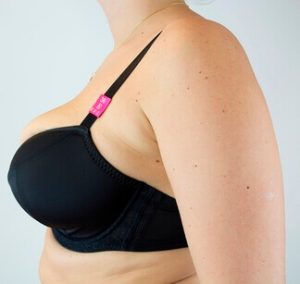
What to do when you can’t find your bra size
You must be aware of the embarrassment of having to constantly yank up a bra with too big a band but close fitting cups. You must also have experienced the skin irritation to your boobs when they are popping out of too small cups yet the band is fitting snuggly.
To avoid these frustrations, experts recommend choosing one size down in the band (also called one sister size down) and one size up in the cups (one sister size up). Thus if your bra size measures 34B, you may want to go for a 32C bra.
In fact, bras of varying band sizes can have the same cup volume. For instance, in the American system, the bras 30D, 32C, 34B, and 36A all have roughly the same cup volume.
How to Know if your Bra is Too Big or too Small
Another important tip to note is that sometimes the chest band may feel too tight but the cause of this might be due to the cups’ volume being too small such that the breasts take up most of the bra.
Similarly, your bra might feel loose at the band due to the cups being too large.
To test whether the problem is with the cups you just need to reverse the bra so that you wear it with the cups at your back. Hook the band from the front and feel the difference in fitness compared to when the cups are over your boobs.
How Long Does it Take to Break in a Bra
If you have selected the correct size of bra, its slight tightness should not worry you because for your new bra to serve you well, it should be close fitting but comfortable. The band should carry most of the breast weight to relieve the shoulders and so it should fit snuggly on the loosest hooks-and-eyes set when it’s new. It should also fit low on your back and stay put, and the efficacy of this in preventing shoulder strain is revealed by properly lifted breasts at the front. If the band is loose, it will soon ride up your back and the boobs will droop, meaning that the weight of the breasts is now laboring the neck and shoulders. In fact, you shouldn’t like a bra that feels a bit loose on the first wear because it will soon be too big for you.
You may have been used to older bras that have been growing looser and it’s obvious that a new bra will feel different. Many women have reported that their new bra breaks in after 3 or 4 iterations of hand washing, the point at which it stops feeling a little bit squeezing. You will also find that after soaking the brassiere in lukewarm water and hand washing it a couple of times, even an uncomfortable underwire may start fitting snuggly.
However, if the bra cups are fitting nicely but the band is still too tight or even cinching after washing a couple of times, you need to consider replacing it with a bra that’s a band size up or else consider using a bra extender such as Closecret Women’s Nylon Bra Extender. It has 3 rows eyes to enable you to use the same bra during your different seasons, such as weight gain or pregnancy.
Wrapping Up
Up to 80% of women around the world wear improperly fitting bras but you don’t have to be among this statistic as long as you know how to measure the size of your bustline and cup volume. Such a bra will comfortably enclose your breasts, the band will fit low on your back, and the shoulders straps will be light-fitting on the shoulders. It may take some time to get the right balance between band size and cup size, and still, even the right one may need to be worn and washed 3 or 4 times before it fits comfortably. Silicone bra inserts and Kate Taylor’s method of measuring the bra size for imbalanced breasts should let you stop worrying if your boobs are asymmetrical.

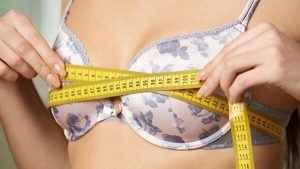
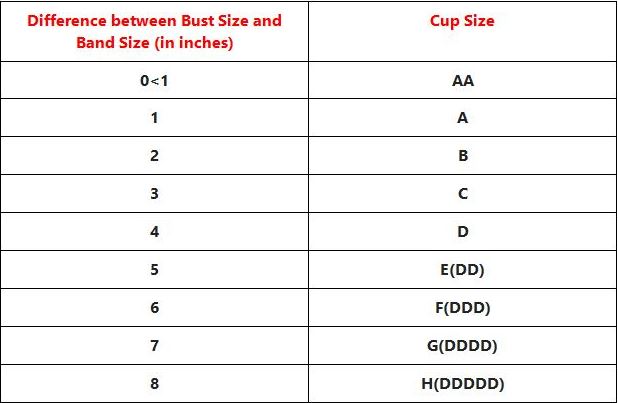
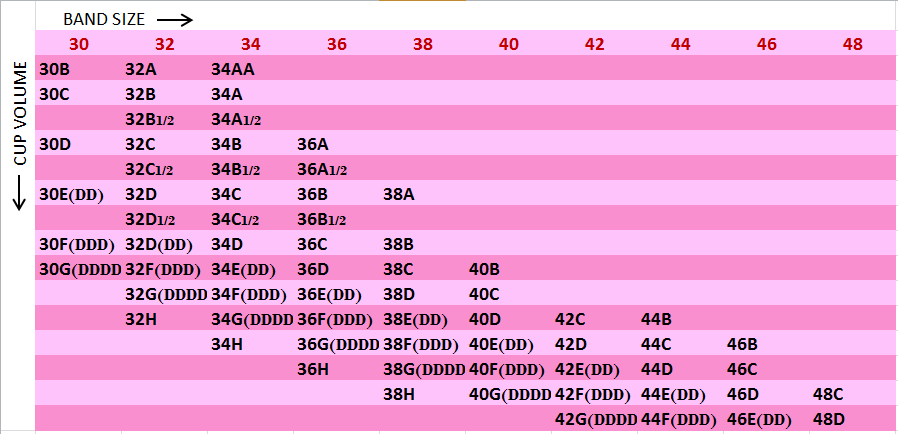
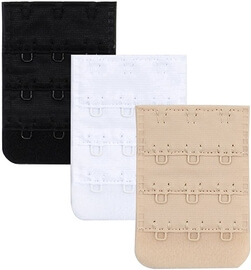
5 thoughts on “How to Determine Your Bra Size (Expert Bra Fitting Tips)”